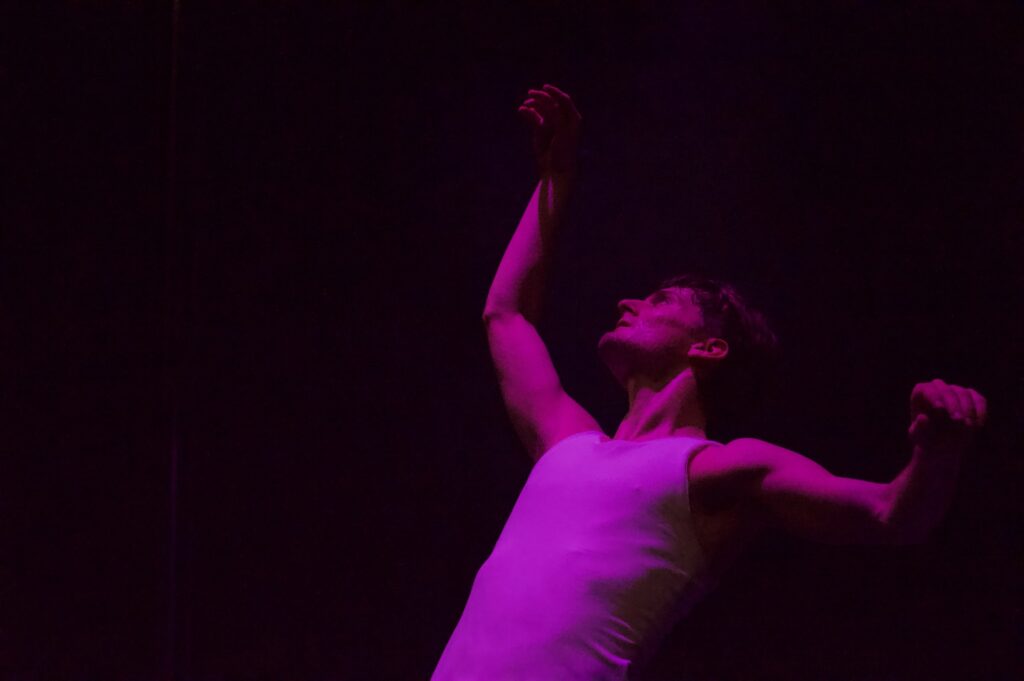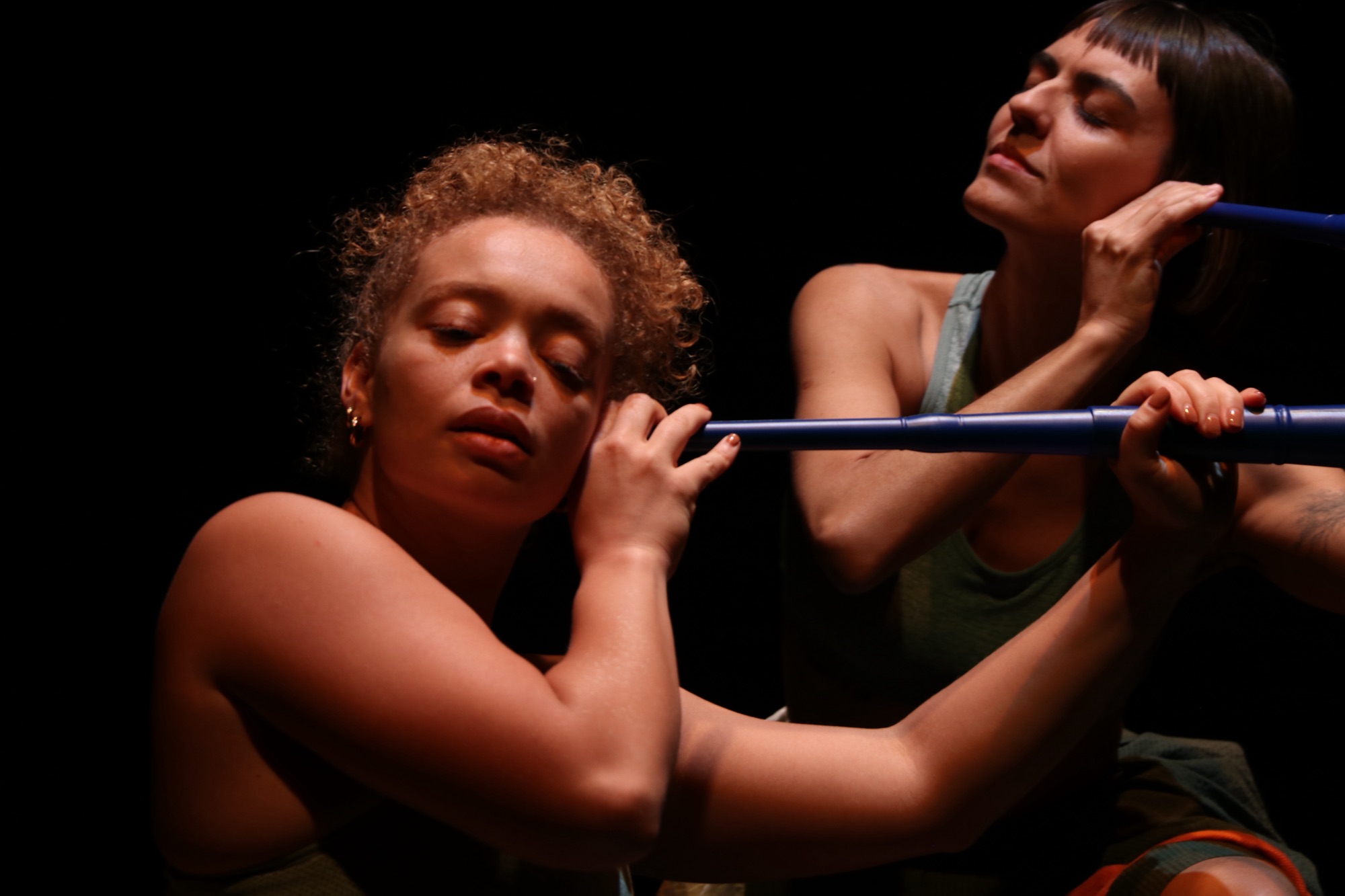Words by Pranita Choudhry.
On 12th February, we had three very different concepts that complemented one another in making the evening a rich experience with the audience delving through their cultural, philosophical and technological worlds. Aandag created a warm environment of solidarity as we explored tradition, culture and community, whilst Adam took us through an internal journey of trying to connect with ourselves. The commonality, though, was that both were attempting to help us connect to our past. We then went into the tech world with Eves, with a sense of helplessness and powerlessness that we all feel with the takeover of technology and AI.
Aandag (Attention!) by Francesca Matthys
Connecting with our roots, heritage and culture was the subject of the first piece, Aandag! by Francesca Matthys and her three dancers and a musician who seemlessly led the audience through African rituals and practices that enrich memories, legacy and lineage. The smell of incense, blowing of horns, and the swaying bodies, all signalled that we were about to step into a deep traditional practice with a purpose.
Through breath work, earthy rhythmic compositions, cleansing and tapping, the dancers retained the essence of Nama Stap dance, a traditional African dance driving a passage to connect with and remember ancestors. The use of crochet by dancers to create a physical closed knit circle helped create a world within; a sense of connection and transfer of energy, interweaving ancestral stories of their mothers and grandmothers.
In Aandag, stories from the dancers began with ‘my grandmother in 1934’, a wonderful technique to lead the audience into their universe. One of my favourite among them was the one with the grandmother’s advice on trying to find love with someone who likes to dance! So much to be remembered and cherished, this piece weaves the fabric of culture and heritage with threads of movement, memory, stories, rituals and practice that took us all on a journey with them.

Adam by Harry Theadora Foster
The performance takes on a bold resolve to connect three otherwise unrelated themes through movement.
A body comes alive through touch, making sure it exists. The excitement in feeling mobile. The child who learns their first dance (demonstrated through an initial birth pose). Then, moving three steps forward and two steps back; an adult who learns who they might have been.
Every time they touch the pole they are reminded of some past event.
The installation of poles at first feels random, but later reveals their true purpose of connecting with the past. This is then exemplified through the coming on and off of the dancer’s clothes. After a while, touching the poles doesn’t lead to the same experience. That is where the mind’s trickery with function and memory comes in. It begs the question, how do we define who we are? Without our memories and experience who are we? And how do we resolve this mystery?
At the end, the dancer goes around in a desperate search for self-identity employing their mastery in contemporary dance, until a path in the form of the shadow appears – a reminder that the doorway to connect ourselves and that which may seem disconnected exists!

Eves by Marie-Astrid Mence
AI is here to stay, and Eves is a stark reminder. At the beginning, two dancers introduce the characters in the piece, one being Eve, the second an online version of her, and a third, AI, the clone creator with its ambition to regulate human life.
As Eve dips into her ebb and flow, reflecting our true human experiences of emotions and vulnerability, AI aims to regulate her feelings and get her to focus on the task at hand. AI works on Eve to truly understand her movements, characteristics and personality traits, showcased perfectly between the two dancers mirroring each other’s dance moves. AI is then able to perfectly create her clone, one that doesn’t get tired and in that sense a better competitor, making a mockery of consent by asking Eve at every step ‘do you consent’?
Does Eve really have a choice in this? Through perfectly synced movements between the three dancers at the end, one views the perfection that AI seeks to achieve at the cost of human experiences and identity. The silver costumes, face art and lighting add the extra technological drama and customisation, the concept and execution had clarity that took the audiences deep into the reality haunting us all.
Header image by Bilal Singh.
Eves credits:
Performers/collaborators : Yu-Chien Cheng Shaylin Bu, Marie-astrid Mence
Choreography: Marie-Astrid Mence
Text: Marie-Astrid Mence
Sound designer & music composer: Fro.
Voice: Kirian Bansal, Fro., and Marie-Astrid Mence
Lighting Designer: Joshua Harriette
